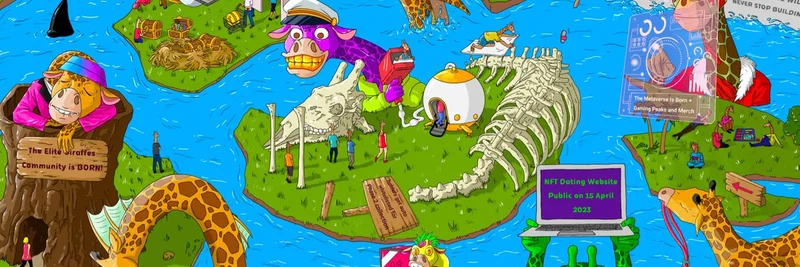Recently, BSC News dropped a tweet highlighting a deep-dive analysis into $ICP, the native token of the Internet Computer Protocol developed by the DFINITY Foundation. The post teases a big year for development on this platform, urging readers to learn what the project is truly about. You can check out the original tweet here. While ICP isn't your typical meme token, its innovative approach to building a decentralized internet could open exciting doors for meme creators and communities in the blockchain space. Let's break it down in simple terms and explore why this matters for the meme token world.
What Makes Internet Computer Stand Out?
Imagine a blockchain that doesn't just handle transactions or simple smart contracts but runs entire websites and apps directly on-chain. That's ICP in a nutshell. Launched in 2021 by the Swiss-based DFINITY Foundation, the Internet Computer acts like a "World Computer." It lets developers build full-fledged decentralized applications (dApps) without relying on centralized cloud services like AWS or Google Cloud. Everything—from the user interface you see to the backend logic—lives on the blockchain.
What sets it apart? Traditional blockchains like Ethereum often require users to pay gas fees for every interaction, which can be a buzzkill for casual users. ICP flips the script with a "reverse gas model." Developers convert ICP tokens into "cycles" (a stable unit tied to the Swiss Franc) to fund their apps' operations. Users? They get in for free, no wallet needed upfront. This could be huge for meme tokens, where virality depends on easy access—think dropping into a meme community app without fumbling for crypto first.
Plus, ICP uses something called Chain Key Cryptography for secure, direct interactions with other blockchains like Bitcoin and Ethereum. No more sketchy bridges that get hacked. For meme enthusiasts, this means smoother cross-chain memes or NFT integrations, blending fun with real utility.
The Tokenomics and Governance Behind ICP
ICP isn't just tech; it's got a solid economic setup. The token plays multiple roles: staking for governance votes, burning to create cycles for app funding, rewarding node providers (the folks running the network's hardware), and even launching community-controlled projects via Service Nervous Systems (SNS).
Governance happens through the Network Nervous System (NNS), an on-chain DAO where staked ICP holders vote on everything from upgrades to policies. Stake longer, get more voting power—encouraging holders to think long-term. This setup is perfect for meme tokens, which often thrive on community governance. Imagine launching a meme project on ICP with an SNS, handing control directly to the degens who love it, all without centralized drama.
On the economic side, there's a balance of inflation (from rewards) and deflation (from burning for cycles). Community buzz suggests that post-June 2025, when token unlocks end, things could tip deflationary if adoption grows. For meme token hunters, this could mean ICP as a stable backbone for volatile meme plays.
Recent Wins and Ecosystem Buzz
2025 has been ICP's glow-up year. Development activity is booming, with tools like ICP Ninja making it easier for devs to jump in—setup in minutes, not days. The ecosystem spans finance (like fully on-chain DEXes), social media (decentralized video and blogging platforms), and even AI tools running censorship-free on-chain.
One cool angle for memes: Platforms like Yral for videos or Nuance for blogs could host meme content that can't be taken down by big tech. Picture meme lords building uncancellable communities where viral clips and stories drive token hype. And with Bitcoin DeFi integrations, you could have memes backed by real BTC holdings.
Sustainability is another win—ICP slashed carbon emissions by 32% in 2024 through green data centers. In a world where crypto gets flak for energy use, this makes ICP appealing for eco-conscious meme projects.
Challenges and the Meme Angle
No project's perfect. ICP faced launch controversies in 2021, like price manipulation allegations (which DFINITY denies), and critics worry about centralization since the foundation holds a chunk of tokens. Node requirements are hefty too—think high-end hardware costing $1,500+ monthly—which limits who can run the network.
Learning curve? Steep for devs new to languages like Motoko. But tools are improving, and the roadmap eyes better cross-chain links, AI infra, and scaling.
For meme tokens, ICP's potential is underrated. While Solana or Base grab meme headlines for cheap txns, ICP offers true decentralization without user fees. Meme projects could use SNS for fair launches, build on-chain social apps for community engagement, and tap AI for generative meme tools. It's like giving memes a fortress against censorship and rugs.
Wrapping Up
The BSC News analysis spotlights ICP's strides, and it's spot-on—this protocol is quietly building the decentralized web's future. For meme insiders, keep an eye on how ICP could evolve meme ecosystems with seamless, community-owned dApps. Dive deeper into the full analysis on BSC News, or explore ICP directly at internetcomputer.org. Follow @dfinity for updates, and let's see if memes go fully on-chain next.
If you're building or hunting meme tokens, consider how platforms like ICP could level up your game. What's your take—could ICP spark the next meme meta?

